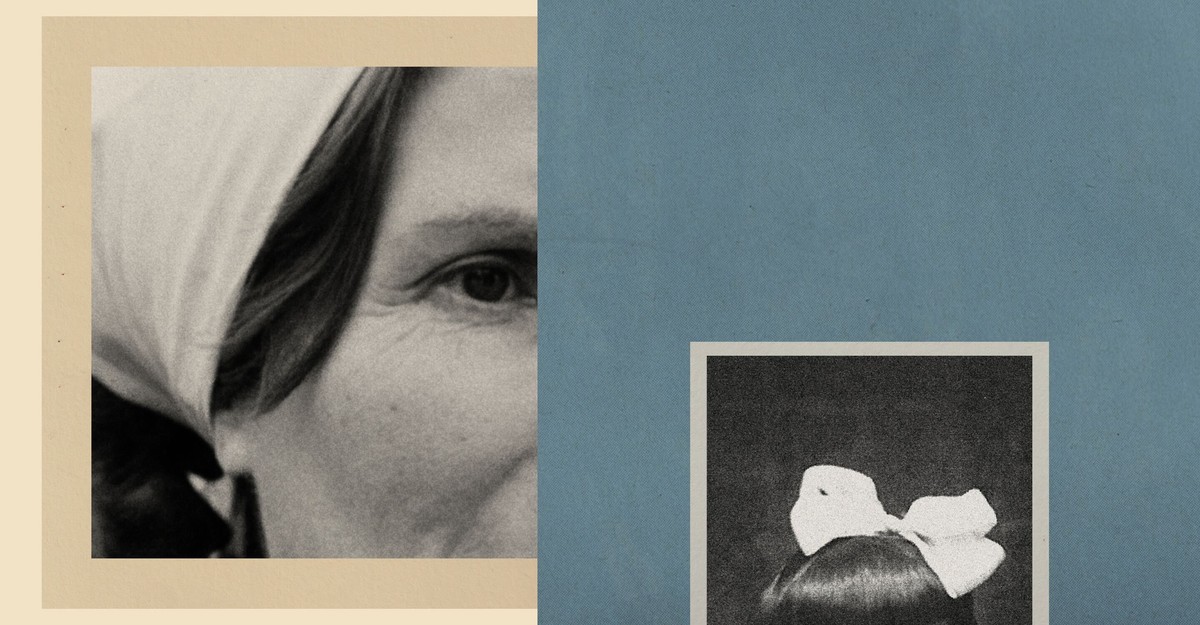In March 1985, I was likely one of the first American tourists to visit Argentina after a military junta relinquished power. Raúl Alfonsín, a human-rights lawyer, was leading the country’s first democratically elected government since the early 1970s. And Nunca Más (“Never Again”),a government commission’s report on its surprisingly rapid investigation into the fate of the desaparecidos, the people “disappeared” by the previous regime, was so popular that it was being hawked at Buenos Aires newsstands.
For the junta’s opponents, it was a buoyant time, but the euphoria didn’t last. The so-called Dirty War, a campaign of kidnapping, torture, rape, and murder that resulted in as many as 30,000 extrajudicial deaths, left lasting scars. Alfonsín was obliged to pursue a delicate political balancing act: He had commissioned the investigation and backed trials of the junta’s leaders. But then, fearing another coup, he reversed course, supporting legislation that impeded further prosecutions.
That pattern of advance and retreat continued under successor regimes. Like Germany after the defeat of Hitler, Argentina lurched back and forth between judging its past crimes and trying to move beyond them. The ensuing decades saw amnesties, trials, protests, severe economic and political turmoil, and the conversion of former detention facilities and other sites into a memorial landscape. An Argentinian alliance of human-rights organizations dedicated to remembrance and justice calls itself Memoria Abierta (“Open Memory”), suggesting a task that remains perpetually unfinished.
In her deeply reported new book, A Flower Traveled in My Blood,Haley Cohen Gilliland both encapsulates that complicated dynamic and explains its broader relevance. “Around the world,” she writes, “in countries attempting to wrestle with histories of violence and trauma, the same questions tend to recur. How should peace be balanced with justice? Is it better, for the health of a society, to pardon or punish the perpetrators?” Caught “between the drive to forget and the obligation to remember,” Argentina is “a case study in the classic frictions that afflict such processes of reckoning.”
In Argentina, this reckoning means more than insisting on justice and commemorating (and identifying) the dead. It involves the persistent challenge of recovering and reuniting the living. Since 1977, near the brutal peak of the junta’s 1976–83 rule, the Mothers of the Plaza de Mayo have marched on Thursday afternoons in front of the Casa Rosada, Argentina’s seat of government, to demand an accounting for their disappeared children. Despite the danger—some of these mothers, too, were murdered by the junta—they were soon joined by another group: Grandmothers of the Plaza de Mayo, intent on the return of grandchildren, including those born to mothers in detention and illegally adopted. With persistence, investigative ingenuity, and cutting-edge genetic tools, the grandmothershave so far tracked down 140 of those missing children.
[Read: My sister was disappeared 43 years ago]
Gilliland focuses on the ordeal of a single shattered family, widens her lens to include other cases, and embeds her tale in a crisp account of recent Argentinian history. Formerly the Argentina and Uruguay correspondent for The Economist and now the director of the Yale Journalism Initiative, Gilliland has long harbored an interest in the grandmothers’ quest. Preoccupied with other work, she waited, she concedes, until almost the last possible moment to tackle the subject. Many potential sources are now dead, and one of Gilliland’s key informants, Rosa Roisinblit, was 102 when Gilliland finally managed to interview her. Fortunately, the author also benefited from the cooperation of Roisinblit’s grandson, Guillermo, who had been illegally adopted, and the University of Washington geneticist Mary-Claire King, whose research helped reunite Guillermo, however uneasily, with his biological family.
Gilliland borrows her title from a line in a poem, “Epitaph,” by Juan Gelman, a celebrated Argentine writer whose personal history makes her use of it particularly apropos. The poem was written before Gelman’s own son and pregnant daughter-in-law were kidnapped in the Dirty War. They were killed, and his newborn granddaughter was stolen and later found with an adoptive family in Uruguay. The titular flower does metaphorical double duty in Gilliland’s story. It represents both the grandmothers’ yearning for their kin and the genetic markers that proved consanguinity.
A Flower Traveled in My Blood begins in 1978 with an account of the kidnappings of José Manuel Pérez Rojo and his pregnant partner, Patricia, who was Rosa Roisinblit’s daughter. The federal police also took the couple’s 15-month-old daughter, Mariana, but left her with relatives. Both José and Patricia had been Montoneros, left-wing guerrillas, but had largely retreated from activism. It didn’t matter. The junta swooped down on militants, dissidents, and innocents alike, conveying them in green Ford Falcons to secret sites without formal charges. Some detainees were eventually released; some were murdered in prison; still others were drugged and flung from planes into the Río de la Plata or the South Atlantic Ocean.
Apart from those directly affected, civil society was slow to mobilize. Rosa, desperate to locate both her missing daughter and the grandson (Guillermo) who she knew had been born in captivity, appealed, with little success, to the federal justice system and Jewish organizations. She finally found solidarity with her fellow grandmothers. They met surreptitiously, but also marched, petitioned, and eventually attracted international attention.
Science proved to be an indispensable ally. King, the geneticist, experimented with different methods of establishing grandpaternity before settling on mitochondrial DNA, which is passed down almost intact through the maternal line. A genetic match can be made with a single maternal relative, and the forensic technique has since been adopted in missing-persons and human-rights cases worldwide.
[Read: A novel in which nightmares are all too real]
In Argentina, the process of reconnecting families could be both emotionally and legally fraught. Not every lost child was happy to be found; custody battles could be wrenching. And the same evidence that linked children to biological relatives could spur a criminal case against their adoptive parents, some of whom had ties to the military and its illicit actions.
Gilliland uses Guillermo’s case to illustrate these complications. Guillermo’s adoptive father, Francisco Gómez, was an employee of the air force. He knew details of José’s torture and Patricia’s detention, but claimed that the baby boy he adopted had been abandoned. He was also violently abusive toward his wife, according to Guillermo. “His beatings were so savage they sometimes sent Jofré to the hospital,” Gilliland writes. After they divorced, he mostly neglected his son.
As often happened, Guillermo’s whereabouts were revealed to the grandmothers’ organization by an anonymous tipster. When Guillermo’s sister, Mariana, tracked him down, Guillermo was skeptical but agreed to a DNA test, which confirmed their connection. His initial contacts with Mariana and his two grandmothers, Rosa and Argentina, were warm. But when his adoptive father was arrested and charged with kidnapping and falsification of official documents, Guillermo was furious. (Gómez was convicted and served more than six years on those charges. He was later sentenced to another 12 years for his role in the disappearance of Guillermo’s parents.) Guillermo worried, justifiably, that the next step was the prosecution of his adoptive mother, “the one person by whom he felt unconditionally loved.” He felt betrayed by Mariana and his grandmothers. “His past life might have been one giant, festering lie,” Gilliland writes. “But his new reality was worse.”
Guillermo’s relationship with Mariana grew particularly strained. They fought over the division of government reparations for their slain parents, their grandmother Argentina’s medical treatment, and the disposition of her ashes after her death. But over time, Guillermo embraced both Rosa and her larger cause. (Mariana declined to speak with Gilliland.)
The author clearly admires the grandmothers’ tenacity, but she raises questions about the costs of their mission and the methods involved—in particular, the practice of aggressive, sometimes nonconsensual collection of DNA evidence. “To whom does identity belong?” Gilliland asks. “Is it the sole property of an individual—or does their family and their society also have a right to truth?”
Germany took decades to come to terms with its responsibility for the Holocaust. Since the 1980s, I have reported on those efforts: the competing narratives at concentration-camp memorials, the tangled history of the Jewish Museum Berlin, the development of a complex landscape of memory. And in 2019, I finally returned to Buenos Aires to assess Argentina’s reckoning, which had begun with so much promise. The work of memorialization seemed vibrant, but still incomplete. No single museum offered a definitive narrative of the junta, the desaparecidos,and the quest for justice. Memory remained fractured, the history unsettled. Even the number of desaparecidos was still vigorously contested.
[Read: A new history of the Western Hemisphere]
The Mothers of the Plaza de Mayo and their supporters continued to march weekly. In 1986, the organization had splintered into two factions. The “founding line” wanted exhumations, reparations, prosecutions—closure for past injustices. The other faction was more focused on radical social change. What struck me most during my visit was a difference in affect. The founding line walked somberly, holding photographs and drawings of missing relatives, while the more radical marchers sang and clapped boisterously. Tourists crowded in with cameras, and the mothers sold handcrafted souvenirs.
At La Recoleta, the elegant cemetery whose “rhetoric of shade and marble” Jorge Luis Borges had famously elegized, I stopped to grieve at Alfonsín’s tomb. The Parque de la Memoria (“Remembrance Park”) was similarly poignant: a large, silent space with a zigzagging granite memorial to the desaparecidos and other murder victims, and an array of sculptures on the banks of the Río de La Plata. Claudia Fontes’s stainless-steel Reconstruction of the Portrait of Pablo Míguez, representing a kidnapped child, seemed to rise from the river itself and stare across its expansive waters, as though searching for the corpses below.
Former black sites had become memorials as well. The most notorious, the Escuela de Mecánica de la Armada, had been converted into the ESMA Museum and Site of Memory. I took a guided tour, saw the basement where detainees had been tortured, watched the video testimony of survivors, and learned, at the House for Identity, of the grandmothers’ genetic-matching project.
Here in the U.S., some commentators have compared the current Trump administration’s expansion of executive authority to the early days of the Third Reich, with its blitzkrieg consolidation of power over the German political system, economy, and culture. But the federal government’s turn to sudden, legally questionable seizures of the undocumented, visa and green-card holders, and even some American citizens, often by unidentified masked men, more closely evokes the abuses of South American military dictatorships in Argentina, Chile, and elsewhere.
Whatever the specific parallels, the problem of how to recover from such assaults on the law and the polity remains vexing. The trauma always outlasts the injury. Gilliland points to Argentina as a pioneering model for its quick initial response and groundbreaking forensics. But it is also a cautionary tale about the slippery route to healing. She notes that the country’s current right-wing populist leader, Javier Milei, is something of an apologist for the junta’s bloody rule. The seesawing continues.
Argentina’s lessons for the current moment are multiple: When tyrants threaten, more people and institutions may cower than resist; the loss of checks on state violence can be catastrophic; and no one knows who the next victim will be. This much is clear: Recovering from the damage will be even messier and more difficult than preventing it in the first place.
From The Atlantic via this RSS feed


